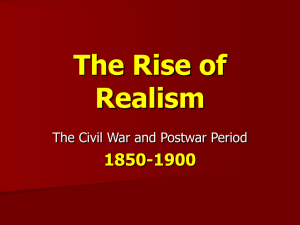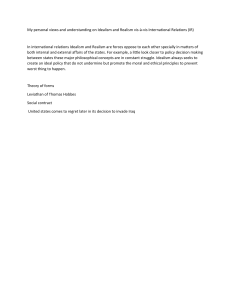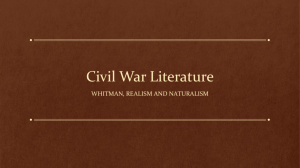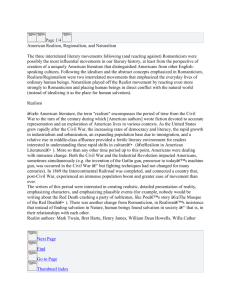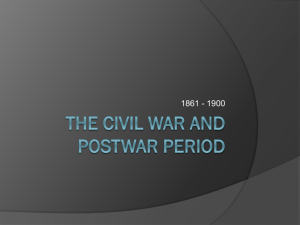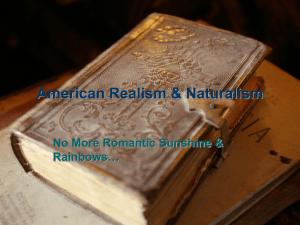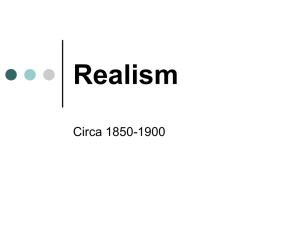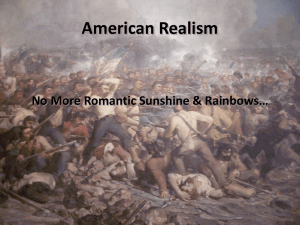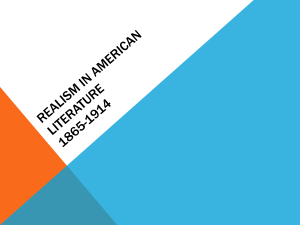The Rise of Realism The Civil War and Post War Period
advertisement
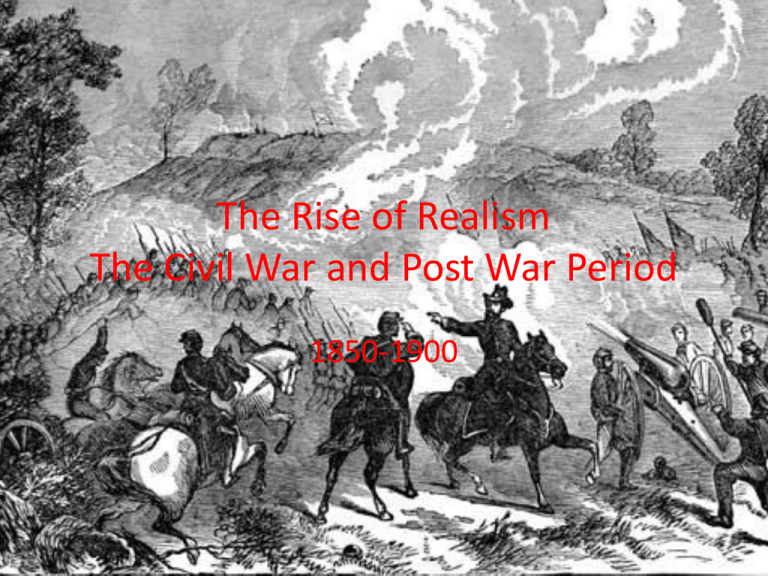
The Rise of Realism The Civil War and Post War Period 1850-1900 Post War Idealism • Writers like Walt Whitman retained an optimistic view of America and the American character. • These writers were pragmatic, moralistic, democratic, and experimental • Emerson had immortalized in his “Concord Hymm” the beginning of the American Revolution Post War Disillusionment • The same war that strengthened these democratic views also led to a sense of pessimism • Melville was fascinated with the war but instead of focusing on heroism and courage, he focused on humanity’s basic evil. The Rise of Realism and Decline of Romanticism: • The romantic novel or romance presents characters who live their lives idealisticallybeyond every day life. Their heroes engage in romantic adventures and exciting escapes. • Realists sought to accurately portray real life, without filtering it through personal feelings, romanticism, of idealism Regionalism and local color • Realism has its roots in regionalism: literature that emphasizes a specific geographic setting and makes use of the speech and manners of the people who live in that region. • Regionalist writers were sometimes unrealistic and sentimental, however, in their depiction of character and social environment. Woman writers such as Edith Wharton wrote about the confines of marriage. • Some well-known regionalists are Mark Twain, Bret Harte, Kate Chopin, and Harriet Beecher Stowe Psychological Realism • Or stream of consciousness focuses on character motivation • Thorton Wilder was a master and illustrating the resilience of the human spirit, or the philosophy of the human mind. Often, his themes are moralistic and Christian in nature. • Many psychological realists demonstrate the prevalence of human pain, frustration, and failure, yet characters could rediscover the simple joys of existence. Social class differences are also highlighted such as in “The Gift of the Magi” by William Sidney Porter.
